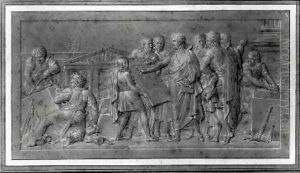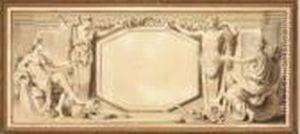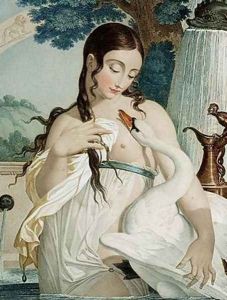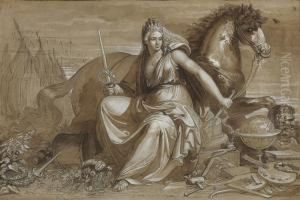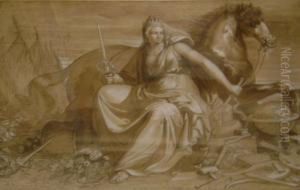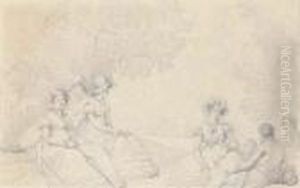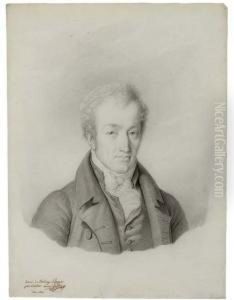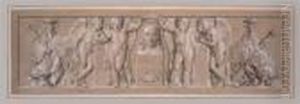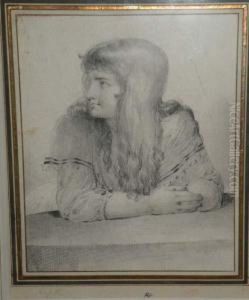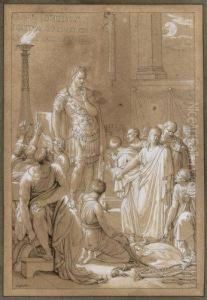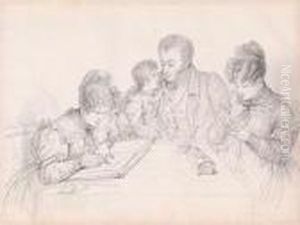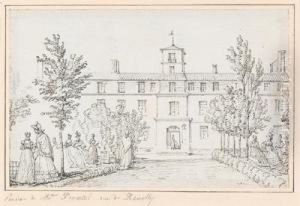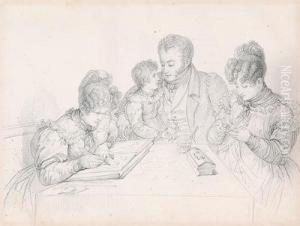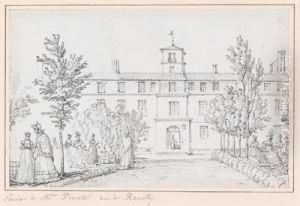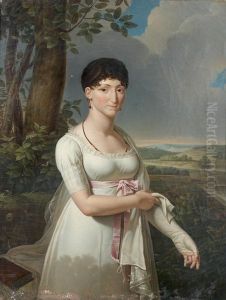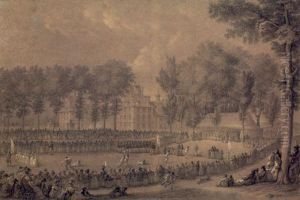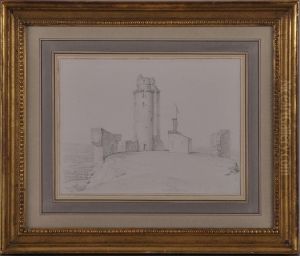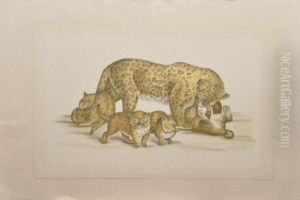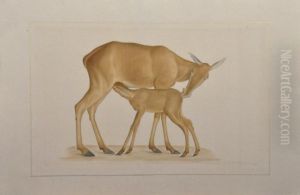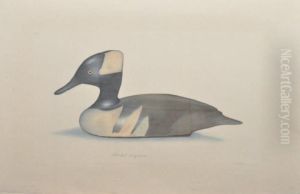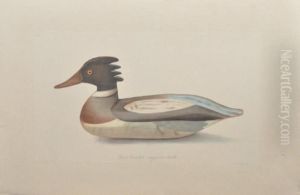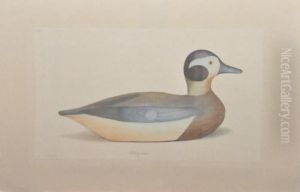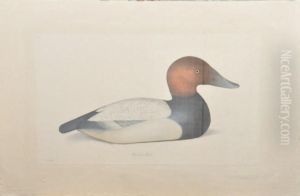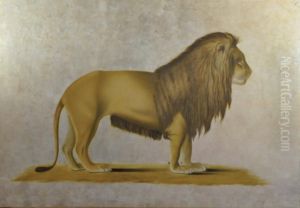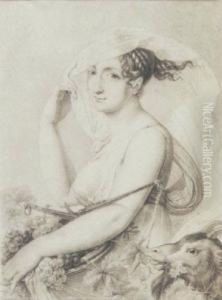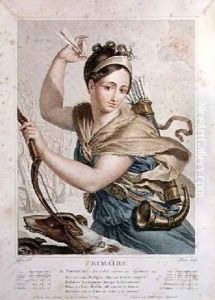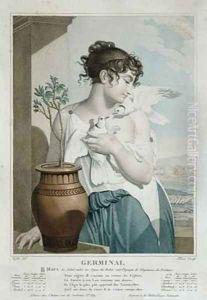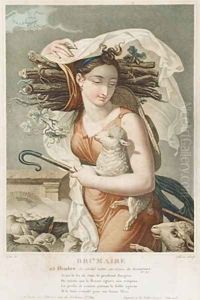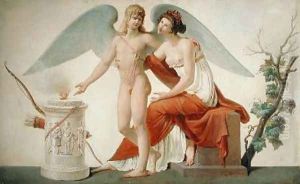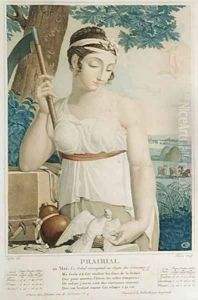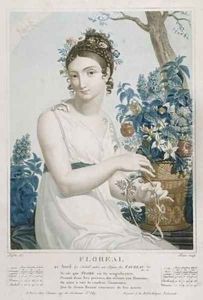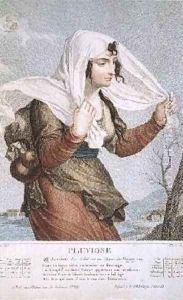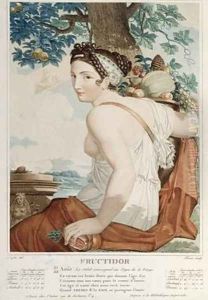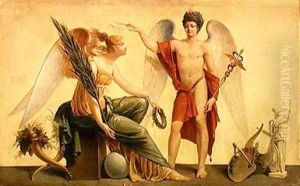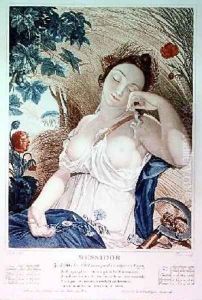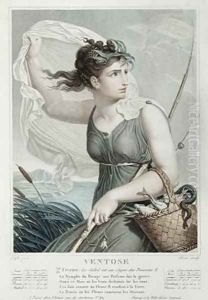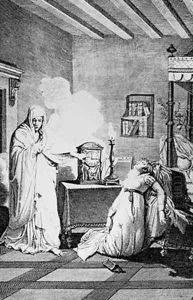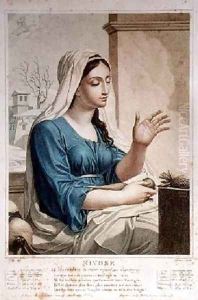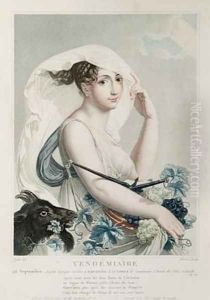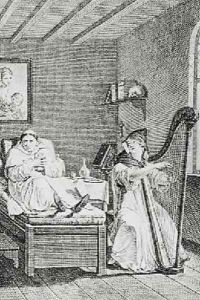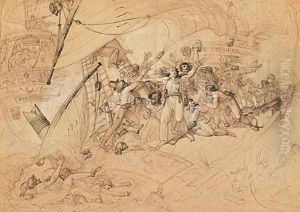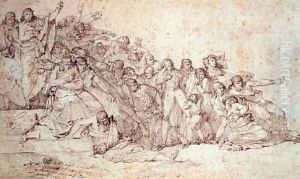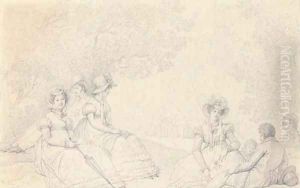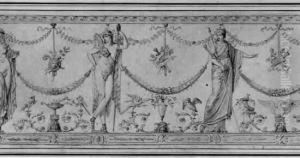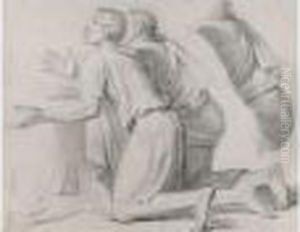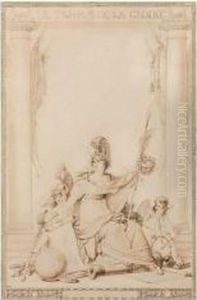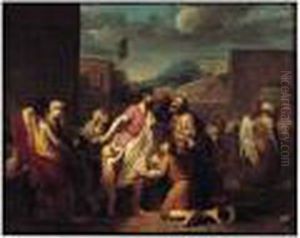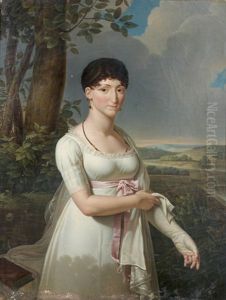Louis Lafitte Paintings
Louis Lafitte, also known as Louis Lafitte the Younger to distinguish him from his brother Pierre Lafitte, was a French painter and draftsman born on November 28, 1770, in Paris, France. He was recognized for his neoclassical style, which was in vogue during the late 18th and early 19th centuries, influenced by the works of artists such as Jacques-Louis David.
Lafitte studied at the École des Beaux-Arts in Paris and was a pupil of renowned artist Jacques-Louis David. He won the prestigious Prix de Rome in 1791, which allowed him to study at the French Academy in Rome, an institution dedicated to the education of French artists. During his time in Rome, Lafitte was exposed to the rich tapestry of classical art and architecture, which further shaped his artistic style.
Upon returning to France, Lafitte worked on various important commissions, including designs for tapestries at the Gobelins Manufactory, and he contributed to the decorative arts and interior design during the reign of Napoleon Bonaparte. Lafitte's works often depicted historical and mythological scenes, and he was also involved in creating designs for the Empire style, which was associated with Napoleon's rule and aimed at glorifying the French state.
After the fall of Napoleon, Lafitte continued to receive commissions, and his work transitioned somewhat with the changing tastes of the period. He produced designs for furniture, porcelain, and other decorative objects, which were popular among the French elite.
Louis Lafitte's contribution to the arts was not limited to his own creations. He also played a significant role in the education of upcoming artists as a professor at the École des Beaux-Arts. Through his teaching, he influenced a generation of artists who would carry the neoclassical tradition into the future.
Lafitte's legacy is that of a versatile artist who was able to adapt his neoclassical training to various forms of visual arts, from painting and drawing to decorative arts. His works are held in various museums and collections, reflecting the enduring appreciation of his talent.
Louis Lafitte passed away on August 17, 1828, in Paris. Despite the passage of time, his works continue to be studied and admired for their clarity, elegance, and adherence to the principles of neoclassicism.
